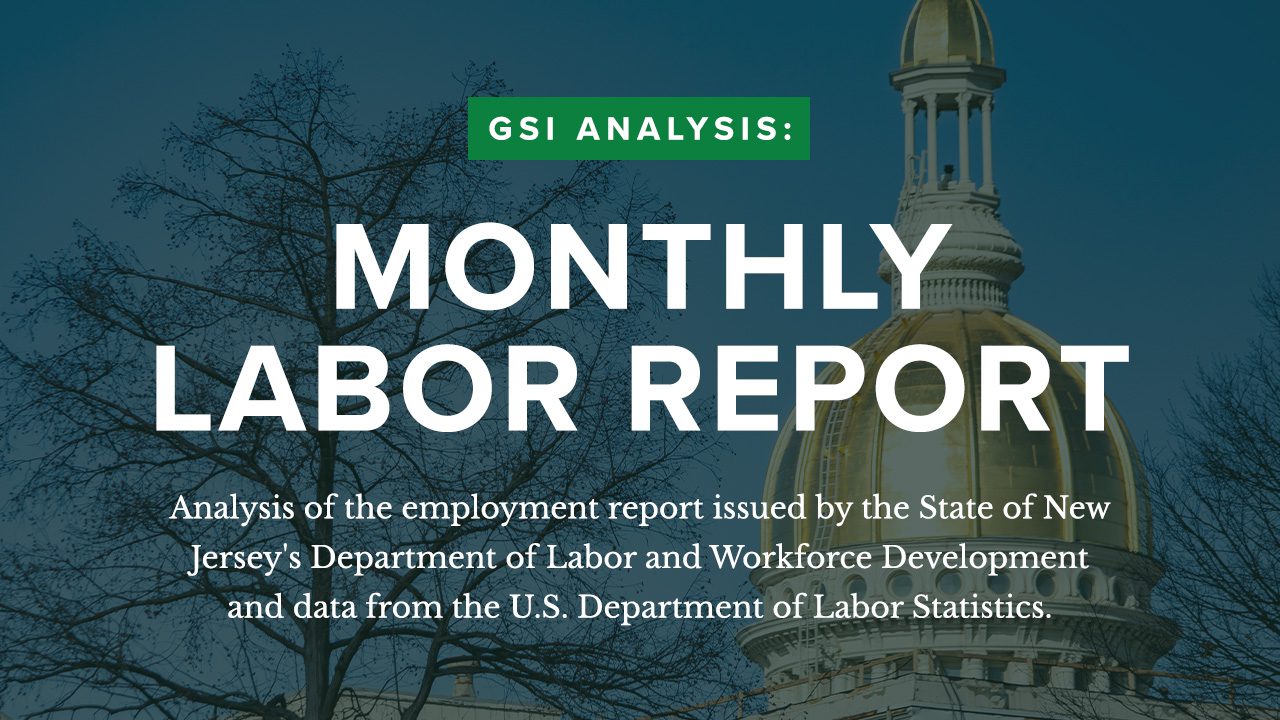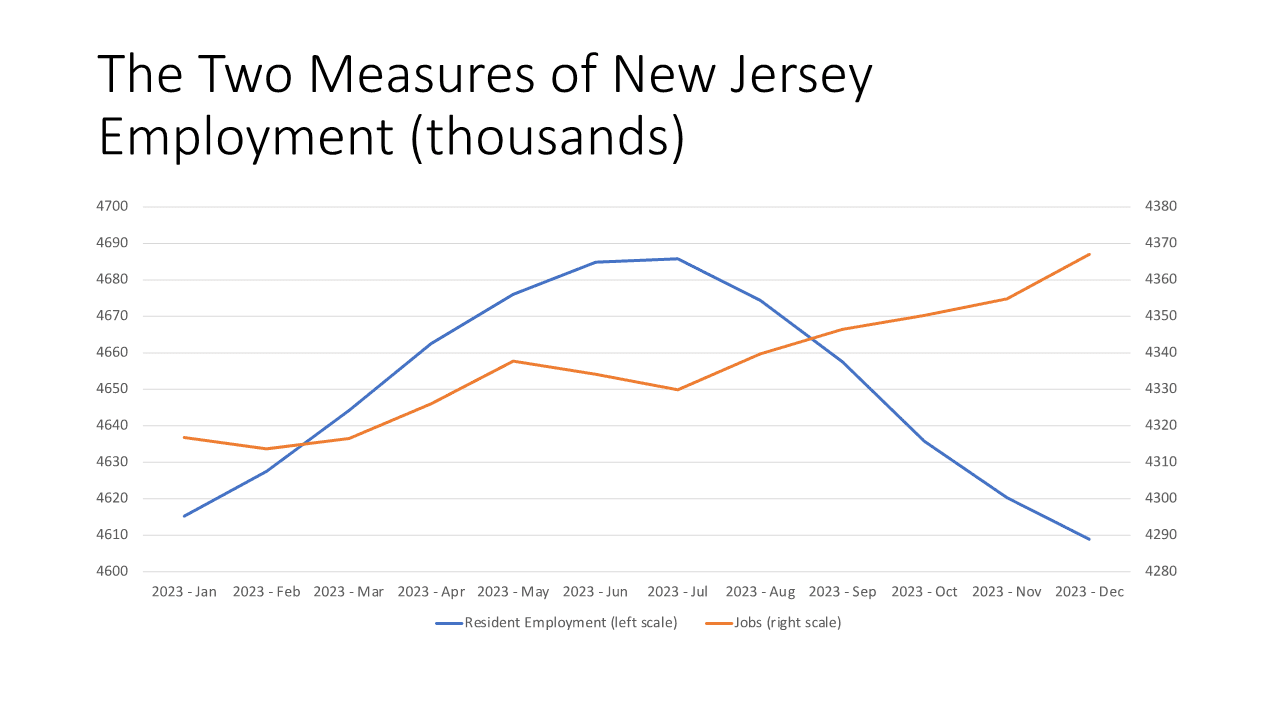Education, Healthcare, Unemployment, Labor
GSI Analysis: December ’23 Jobs Report – Another Mixed Month for New Jersey’s Labor Market

- A solid increase in the job count of more than 12,000, but…
- Our unemployment rate moves up to 4.8%, more than 1% worse than the US average.
- Possibly showing further weakness, NJ total labor force and employment fall.
On January 18th, New Jersey’s Department of Labor and Workforce Development issued the monthly jobs report for December 2023. Dr. Charles Steindel, former Chief Economist of the State of New Jersey, analyzed the report for the Garden State Initiative:
Once again, the two major sets of numbers for New Jersey’s labor market diverged sharply. Let’s begin with the positive news: the total number of jobs in the state is estimated to have grown 12,200 in December. That’s the fifth straight gain, and the largest one since January. Except for professional and business services, all major sectors grew (or showed no change). Education and health services was the strongest, with an increase of 4,300 (more than one-half of one percent).
Now, as to the actual number of residents employed, that’s the bad news. The state’s unemployment rate moved up to 4.8%, with marked losses in both the labor force (down 7,600) and the resident employment count (down 11,400). So, in December there was a remarkable divergence of 23,600 between the changes in the number of jobs and the number of residents at work. There are differences between these two measures: 1) the job count includes inbound commuters and people who have more than one job; but 2) the resident employment figures includes the self-employed and outbound commuters. The two are derived from different samples and have independent seasonal adjustment factors, so divergence is to be expected, but the recent gaps are fairly remarkable.
Over the next two months the recent numbers for both will be subject to the usual annual revisions; hopefully the gaps will be reduced. For 2023 as a whole, resident employment averaged about 85,000 higher than in 2022, while the job numbers were about 90,000 higher than in 2022. So, the differences appear to reflect very different movements during the year—the resident employment count was much stronger in the first half, and much weaker in the second half. It’s possible that these differences will be ironed out in the revision process, and it could be that the unemployment rates in recent months would also be reduced, but, if so, likely at the expense of higher figures for the first half of 2023 (the January unemployment rate was 3.4%). Still, even if that scenario plays out, the data will likely continue to show that for 2023, as a whole, unemployment in the state was higher than in 2022, and probably rising over the course of the year—people have been finding it harder to find a job.

